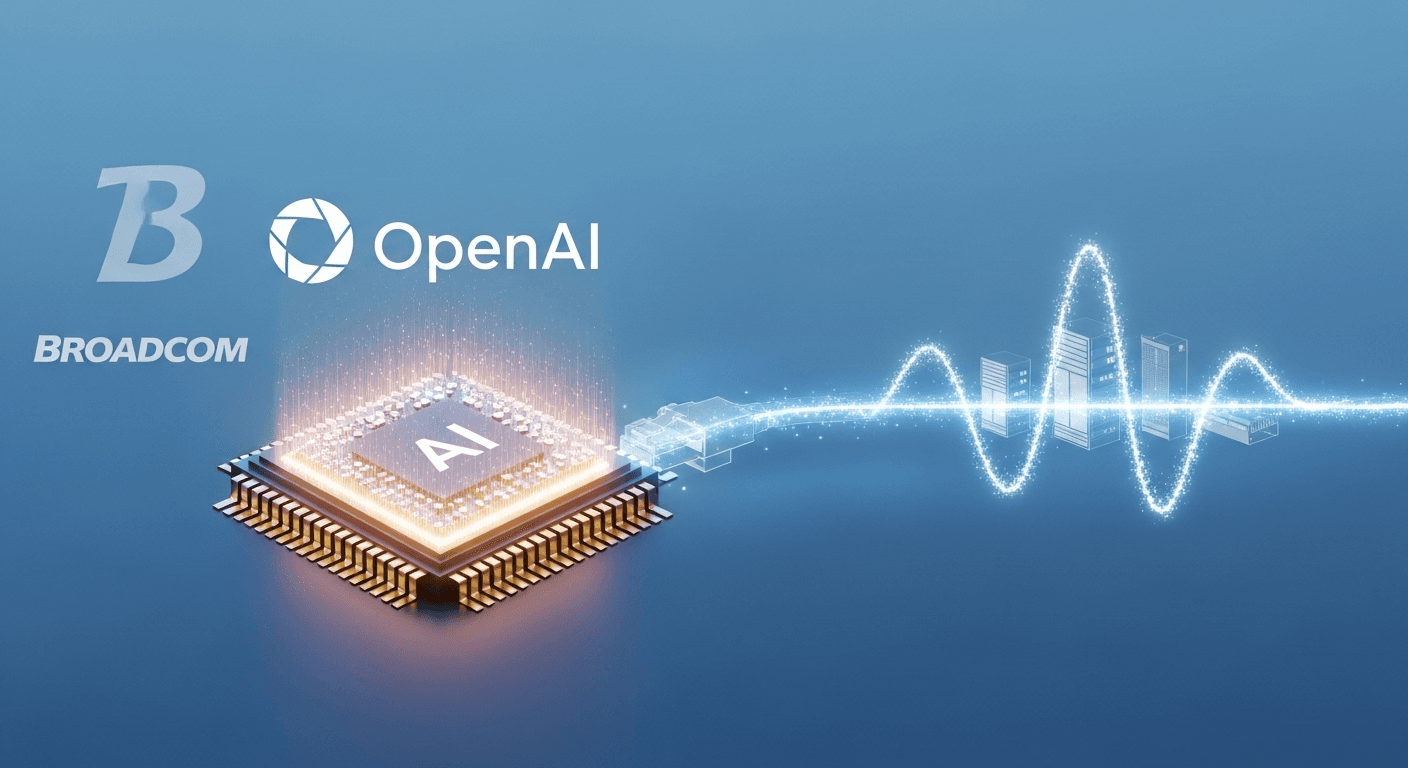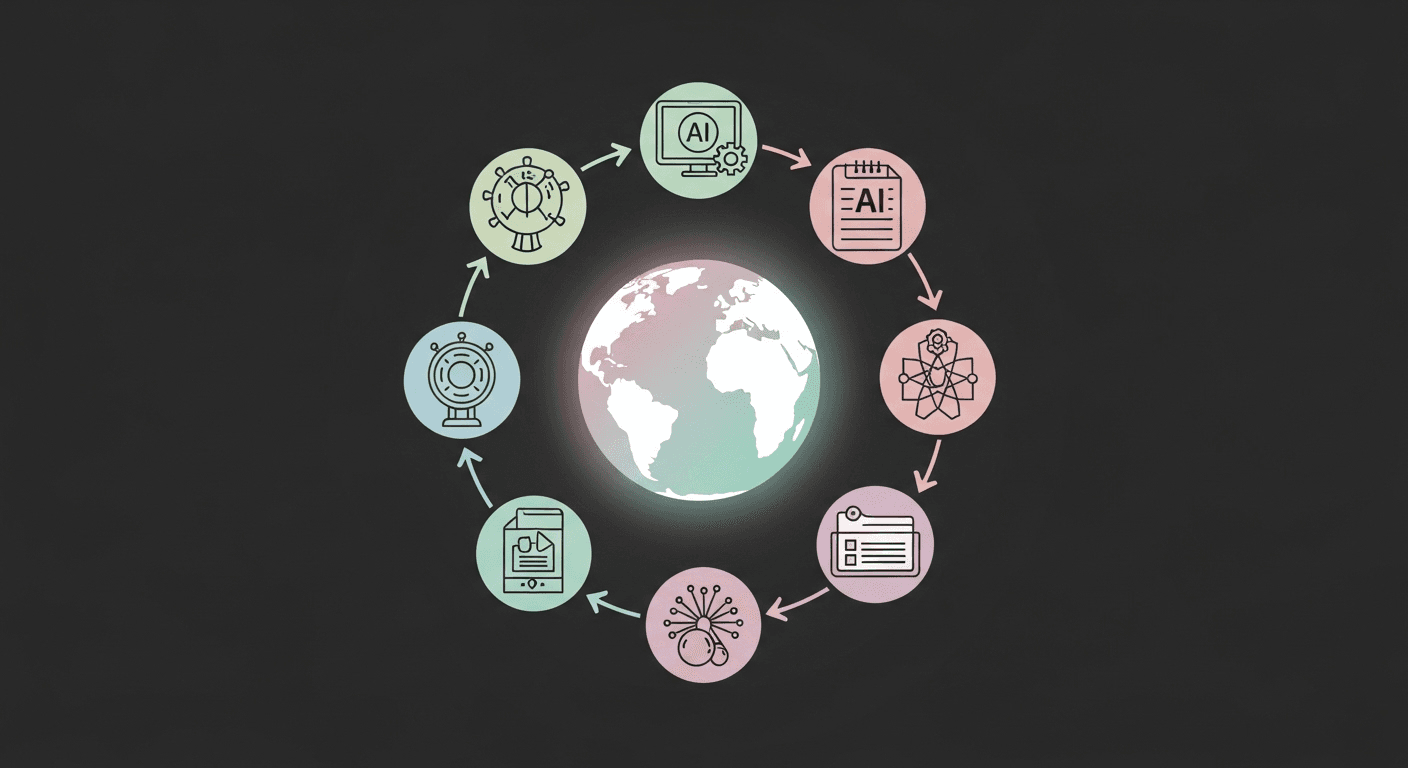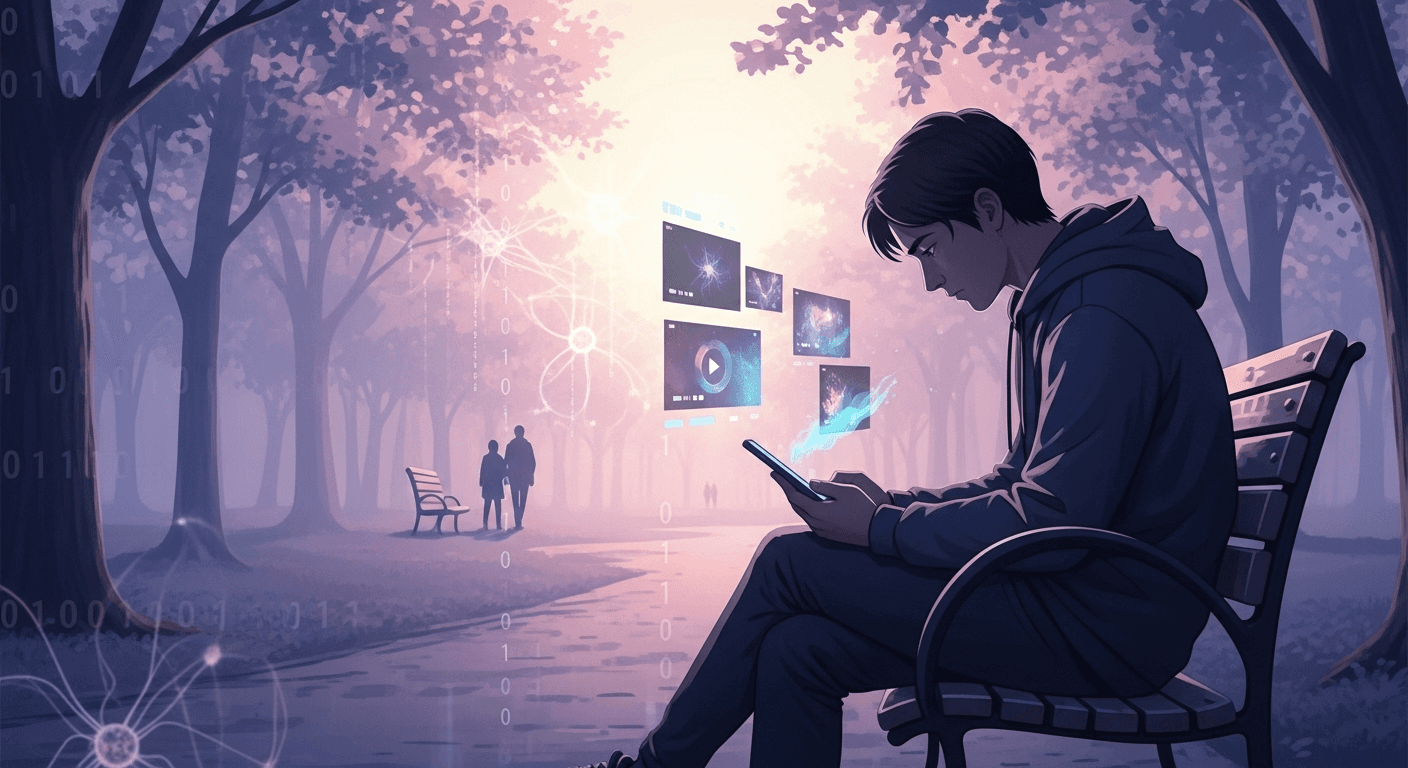Inside Open Source AI Week: How PyTorch, CUDA Python, and a Global Community Are Advancing AI
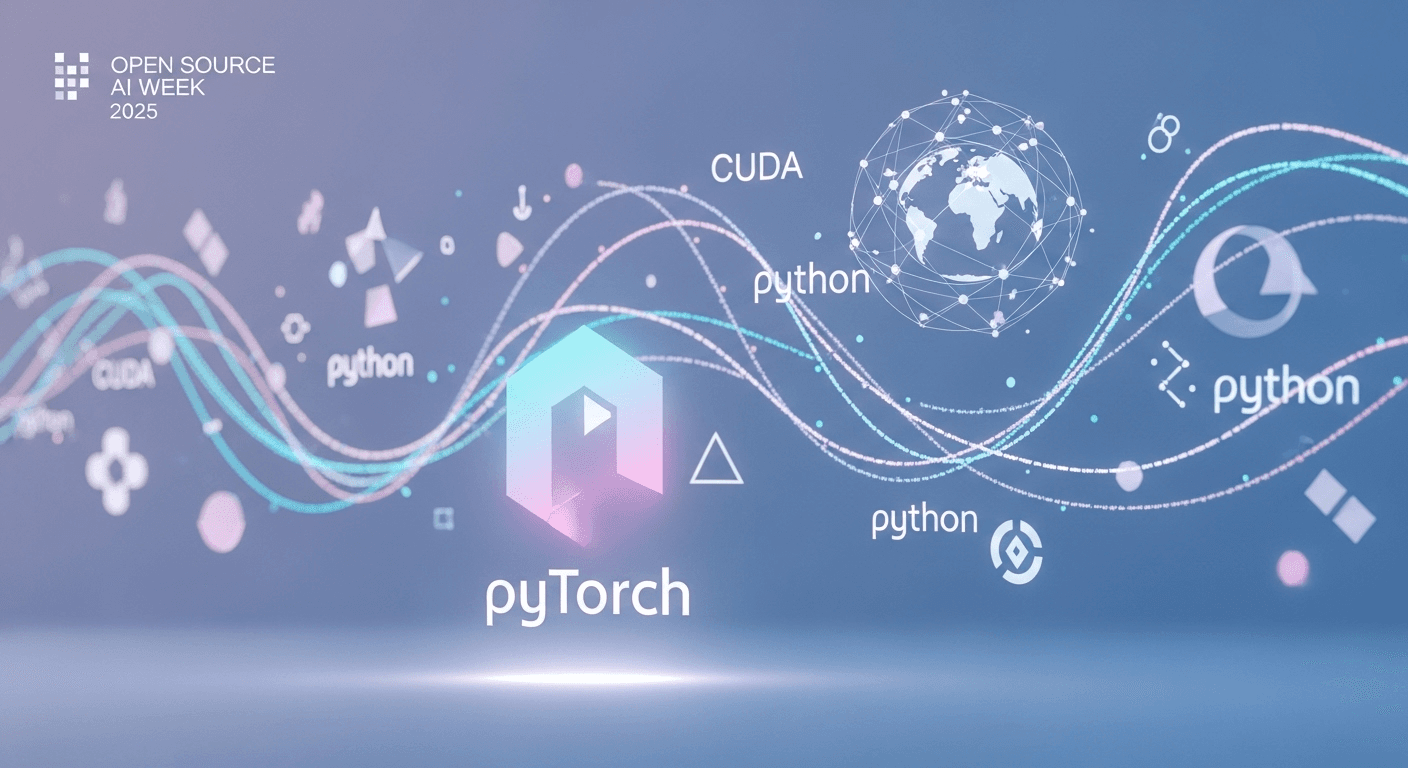
Inside Open Source AI Week: How PyTorch, CUDA Python, and a Global Community Are Advancing AI
San Francisco is buzzing this week as Open Source AI Week unfolds from October 18-26. This event brings together developers, researchers, and contributors for hands-on sessions, meetups, and insightful discussions about the future of open AI. The highlight, the PyTorch Conference, takes center stage, showcasing how collaborative efforts are paving the way for smarter, faster AI.
This guide sheds light on what this exciting week entails, highlights its significance, and explains how tools like PyTorch and CUDA Python empower developers to transform ideas into production-grade AI.
What is Open Source AI Week?
Open Source AI Week is a series of events led by the Linux Foundation, taking place throughout the Bay Area. The agenda is packed with summits focused on infrastructure and evaluation, hackathons, community meetups, and the two-day PyTorch Conference (October 22-23). If you want to see the open-source ecosystem in action, this is the place to be.
Key Highlights:
- PyTorch Conference (Oct 22-23, Moscone West): Expect deep dives into scaling, benchmarks, mobile and embedded AI, safety tracks, and a startup showcase. Attend practical sessions designed to help you harness the full power of PyTorch for both research and production.
- Open Agent Summit (Oct 21): This summit revolves around intelligent AI systems that perceive, plan, and act. If you’re interested in tool-use, multi-agent coordination, or standards, this day is packed with valuable content.
- Keynotes and Meetups: Featuring speakers from NVIDIA and community partners, these sessions deliver insights on robotics, deployment strategies, and the connection between open research and tangible outcomes.
Why Open Source Matters for AI Right Now
Open source is a powerful driver of innovation, breaking down barriers, boosting transparency, and enabling communities to iterate swiftly. In the realm of AI, this impact is magnified. Shared models, datasets, and tools enhance reproducibility, facilitate baseline comparisons, and enable improvements to be transferred across domains. This week embodies that spirit, underscoring why countless organizations are invested in open ecosystems.
PyTorch + CUDA Python: A Developer-First Stack
PyTorch thrives due to its user-friendly Python interface and seamless integration with NVIDIA’s CUDA platform for GPU acceleration. In 2025, NVIDIA empowered Python as a primary pathway for CUDA development, enabling idiomatic Python access to CUDA, streamlined packaging, and developer-friendly libraries that connect Python code to optimized CUDA-X math routines. In essence, it combines the performance users expect from CUDA with the ease of Python.
New Tools and Features for Developers:
- CUDA Python: An evolving metapackage that offers access to CUDA Runtime and core APIs via Pythonic interfaces, ensuring low-level bindings are available when needed. Perfect for end-to-end GPU work in Python.
- nvmath-python: A bridge connecting Python to CUDA-X math libraries (including cuBLAS, cuFFT, and more). It allows you to maintain familiar workflows using NumPy/CuPy/PyTorch while achieving near-native performance for math-intensive tasks.
- Quality of Life Improvements: Features like kernel fusion, easier extension integration, and cleaner packaging streamline the process of moving prototypes into production.
Recent usage statistics confirm this trend: PyTorch has recently surpassed an average of over 2 million downloads daily on PyPI, with a peak of 2.8 million in a single day, demonstrating its extensive reach across research and industry.
The Week at a Glance: Key Events to Follow
Beyond the PyTorch Conference, Open Source AI Week encompasses specialized summits, meetups, and hackathons showcasing open tooling:
– AI Infra Summit and Measuring Intelligence Summit: Sessions covering training/inference scaling, tuning, and evaluation in open ecosystems.
– GPU Mode IRL Hackathon and Community Meetups: Hands-on opportunities to experiment with modern frameworks and open tools, supported by mentors and partners.
– Keynotes like Jim Fan’s Talk on General-Purpose Robotics: Insights into how physical AI research integrates open models, simulations, and accelerated computing.
NVIDIA’s Commitment to Open Source
NVIDIA actively promotes open-source AI through the release of tools, models, and datasets for developers. A glance at its GitHub organizations reveals over 1,000 public repositories, demonstrating years of contributions across various domains, including containers, compilers, math libraries, agents, and robotics.
Recent Milestones:
- CUDA Python and Accelerated Python Updates: New idiomatic Python components and early prototypes like cuda.core and CCCL Python bindings.
- Open GPU Kernel Modules: Expanding community engagement and collaboration around drivers with open Linux GPU kernel modules.
- PhysX GPU Source Now Open: This popular physics engine has made its full GPU kernel source available under BSD-3, enhancing opportunities for research and contributions.
- KAI (Run:ai) Scheduler Open-Sourced: A Kubernetes-native GPU scheduler designed to optimize cluster utilization and fairness for AI workloads.
NVIDIA also reports strong developer adoption, with over 6 million developers in its broader platform ecosystem, underscoring the impact of contributions to its popular frameworks and tools.
Models and Datasets: The Benefits of Sharing
Sharing models and datasets is vital for AI advancement, particularly in fine-tuning and benchmarking. NVIDIA hosts hundreds of models and datasets on Hugging Face, ranging from speech and vision to robotics and scientific computing. Notable examples include the OpenScience dataset, which aims to enhance reasoning on advanced benchmarks, and targeted collections for robotics that support evaluation and skill learning.
Deploying open models in a production environment comes with its own set of challenges. NVIDIA’s NIM inference microservices simplify this by providing a fast and consistent deployment pipeline for a large array of Hugging Face models, thereby alleviating the operational burden of managing multiple runtimes.
Industry observers are noticing NVIDIA’s increasing involvement in open model ecosystems, suggesting that the company has emerged as one of the most active contributors to Hugging Face-hosted resources. The overarching insight is that large organizations increasingly view open collaboration as a strategic avenue for rapid innovation.
PyTorch and CUDA Python in Action
For those building with PyTorch today, consider these practical strategies to streamline your workflow:
– Accelerate math-intensive code paths without completely overhauling your stack: Leverage nvmath-python alongside NumPy, CuPy, or PyTorch to combine operations and harness CUDA-X performance.
– Maintain prototypes in Python while scaling to GPUs: Use CUDA Python’s higher-level interfaces for orchestration, dropping down to low-level bindings only as necessary.
– Ensure reliable, repeatable deployment: Standardize serving through microservices that abstract model-specific runtimes, enabling experimentation with multiple open models without re-engineering infrastructure each time.
Physical AI: Bridging Open Models and Robust Robots
A significant theme of this year’s conference is the emergence of physical AI, where agents perceive, plan, and act in the physical world. NVIDIA unveiled the Isaac GR00T N1 open humanoid foundation model and highlighted Newton, an open physics engine being developed in collaboration with research partners. This reflects a broader initiative to make robotics research more accessible and applicable. Expect further discussions throughout the week on how open simulations, datasets, and models will accelerate the development of real-world skills.
Looking Ahead: Community Trends and Insights
Open Source AI Week highlights several long-lasting trends:
– Maturation of Python-First GPU Development: The user-friendly nature of CUDA Python and its accompanying libraries allows developers to remain in Python from start to finish.
– Strengthening of the Open Model/Data Loop: Shared resources and evaluation tracks enable teams to compare, reproduce, and improve their results more efficiently.
– Increased Focus on Governance and Security: With the growth of open AI, supply chain risks and licensing integrity are becoming more pressing. Researchers have identified risks associated with malicious configurations in model hubs and frequent drifts in licensing between models and downstream applications. Teams should incorporate checks into their pipelines.
How to Participate This Week
You don’t need a conference badge to get involved! Here’s how:
– Explore PyTorch Conference talks and summaries: Review session materials to adopt best practices.
– Join meetups or hackathons if local: Follow community accounts for recaps and project links.
– Set hands-on goals: Accelerate a bottleneck using nvmath-python, prototype a CUDA Python kernel, or deploy a small open model behind a standardized service. Document and share your findings.
Quick Start: Three Mini-Projects to Tackle This Month
- Optimize a Data Preparation Step with nvmath-python: Swap a slow CPU transformation for a fused GPU operation and assess speed improvements.
- Port a Hot Loop to CUDA Python: Initiate with Pythonic CUDA Runtime calls, then profile and refine. Ensure a fallback strategy for non-GPU hosts.
- Serve Two LLMs with a Unified Microservice: Standardize inference calls to compare models seamlessly without needing to retool your entire stack each time.
Conclusion
Open Source AI Week emphasizes a fundamental truth: when tools, models, and ideas are shared, the entire field progresses more rapidly. With PyTorch’s thriving ecosystem, the developer-centric advancements of CUDA Python, and a growing catalog of open models and datasets, teams have unprecedented leverage. Whether you’re just embarking on GPU acceleration or managing advanced agent-based systems in production, this week offers ample opportunities to learn, build, and contribute.
NVIDIA’s coverage promises more insights from the community, including an upcoming AI Podcast episode featuring Bryan Catanzaro and Jonathan Cohen discussing open models and the Nemotron family. Keep an eye out for the recaps throughout the week to gather takeaways you can apply immediately.
FAQs
What is Open Source AI Week?
Open Source AI Week is a series of events organized by the Linux Foundation in San Francisco (Oct 18-26, 2025) that focuses on open-source AI, with the PyTorch Conference as the key gathering.
How does PyTorch benefit from NVIDIA GPUs?
PyTorch leverages the CUDA platform for GPU acceleration, with Python-first enhancements and libraries like nvmath-python allowing developers to create efficient code without leaving Python.
What is CUDA Python?
CUDA Python includes a set of Python packages that provide idiomatic access to CUDA and low-level bindings as needed, facilitating orchestration of GPU tasks from Python while retaining the option for fine control.
How extensive is NVIDIA’s open-source contribution?
NVIDIA’s GitHub organizations (including NVIDIA, NVlabs, and NVIDIA-Omniverse) host over 1,000 public repositories covering a wide range of topics, including drivers, compilers, libraries, and robotics.
Where can I access NVIDIA’s open models and datasets?
NVIDIA provides a wealth of models and datasets on Hugging Face, including collections focused on research and application, such as OpenScience and robotics evaluation sets. NVIDIA NIM streamlines the deployment of these models at scale.
Thank You for Reading this Blog and See You Soon! 🙏 👋
Let's connect 🚀
Latest Blogs
Read My Latest Blogs about AI
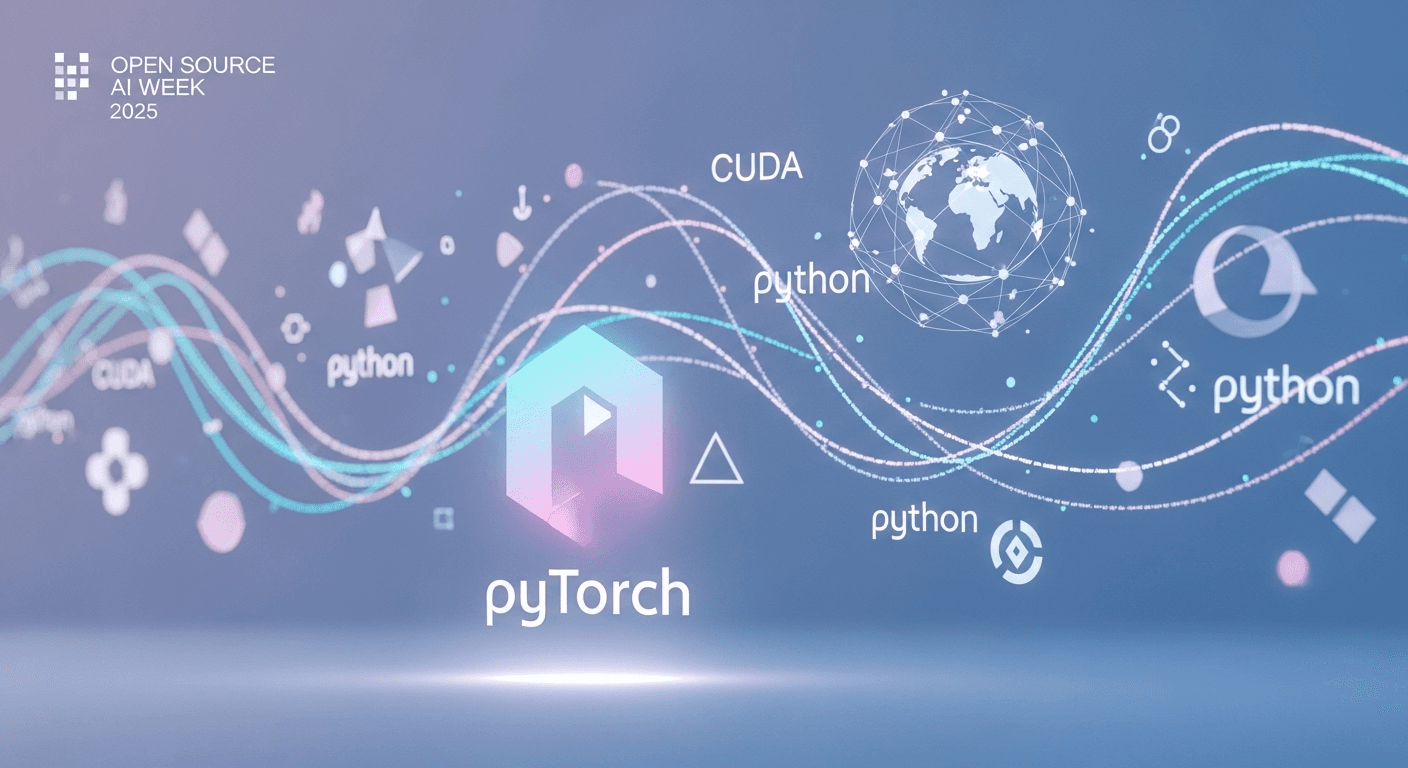
Inside Open Source AI Week: How PyTorch, CUDA Python, and a Global Community Are Advancing AI
Open Source AI Week highlights how PyTorch, CUDA Python, and open models are pushing the frontiers of AI. Discover key events, tools, and practical insights for developers in 2025.
Read more